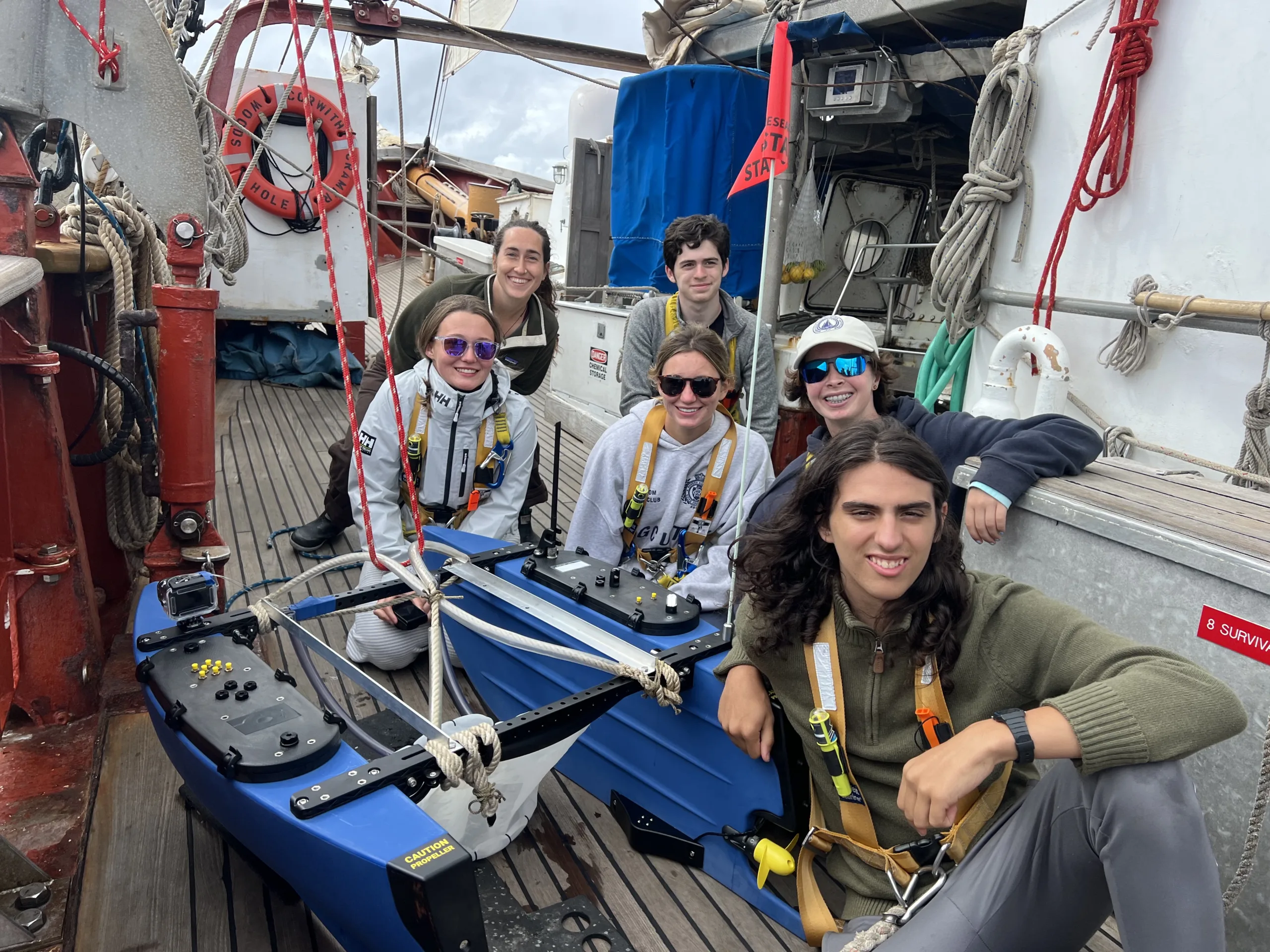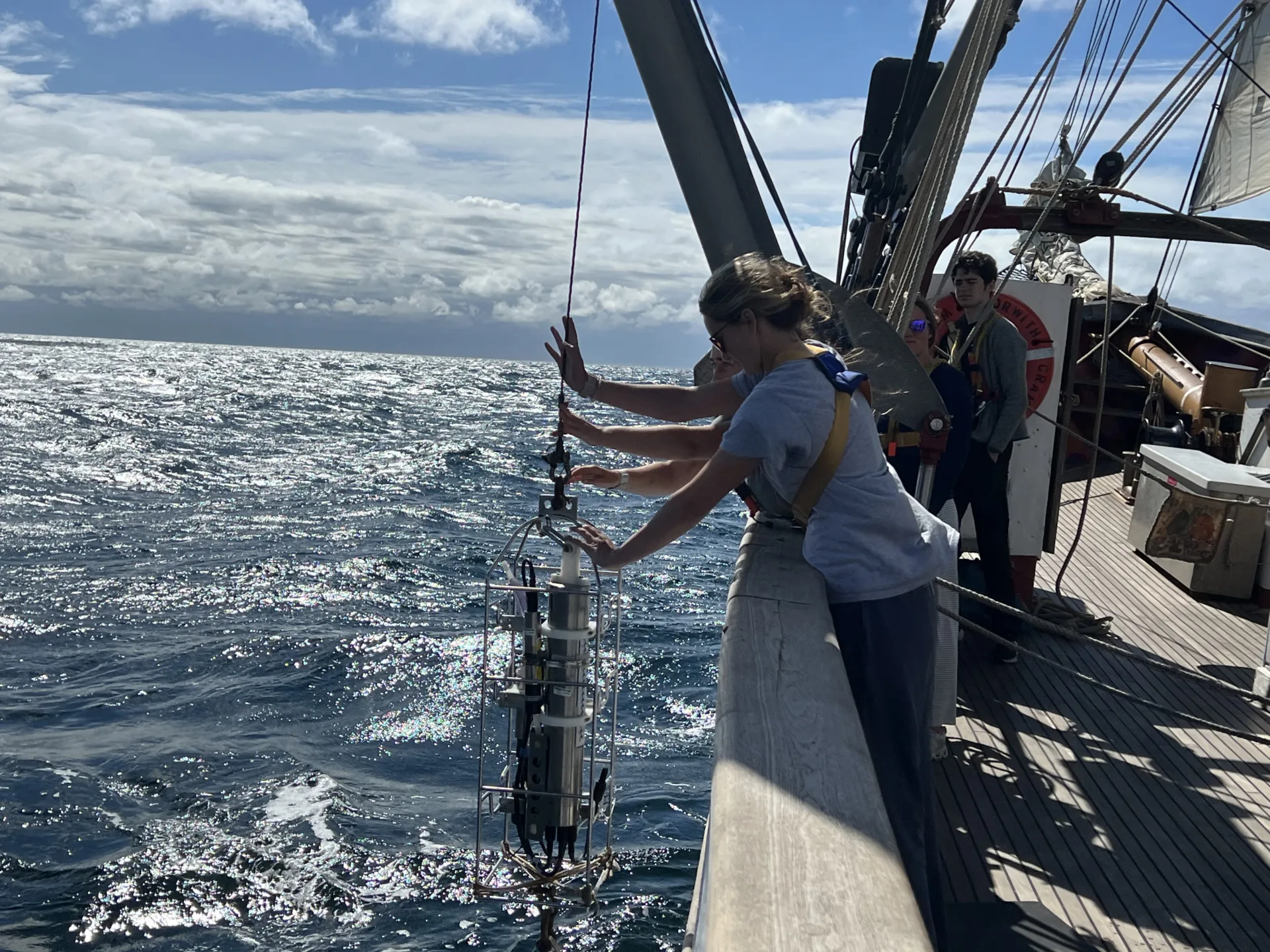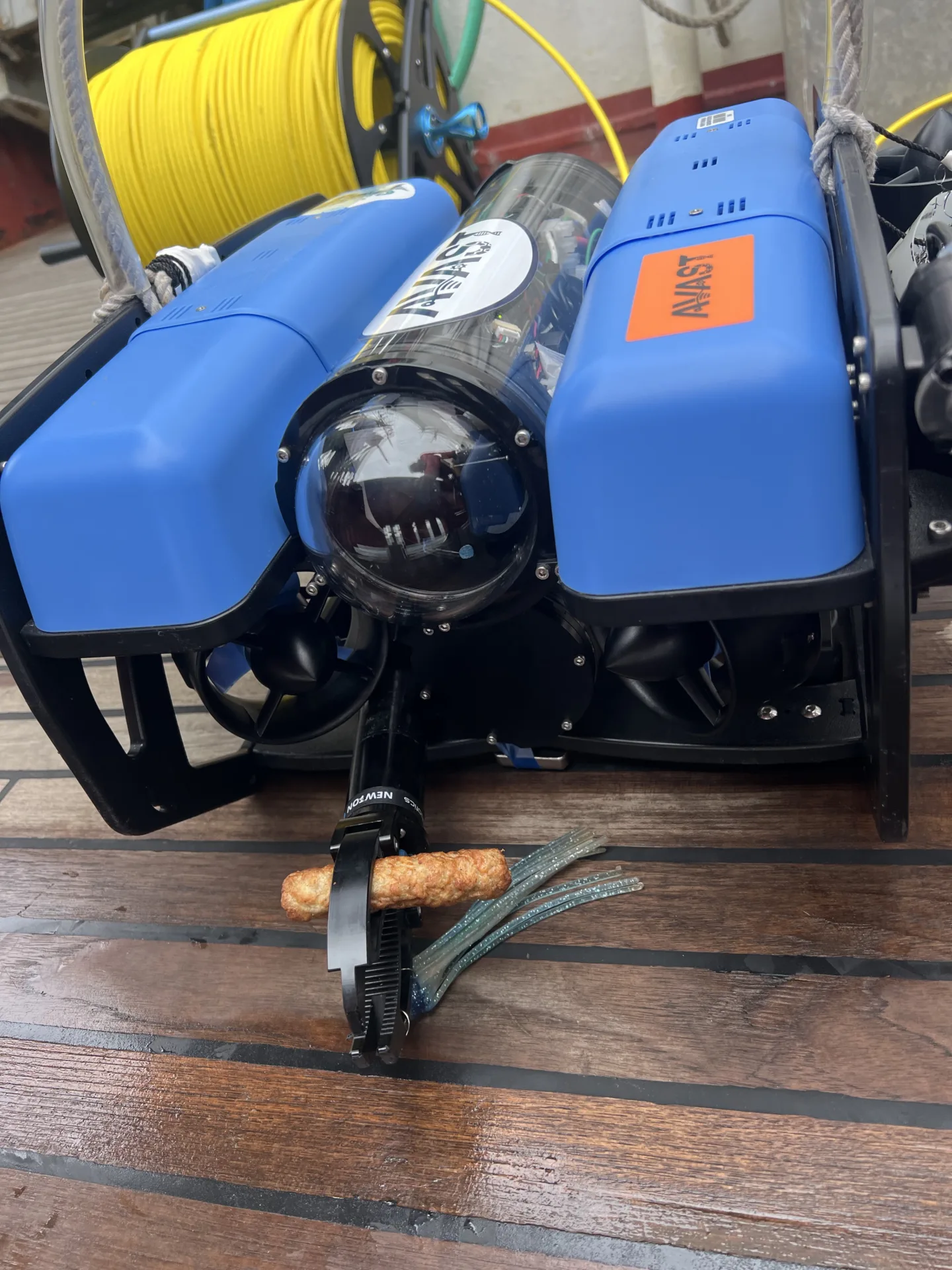Programs Blog
The First and Only Diving of Wolly Hammoth

Wednesday, 20 August, 2025
Noon Position: (Lat and Long): 42 degrees 51.07’ N, 069 degrees 02.96’ W
Log (nm): 159.6 nm
Weather: Cloudy with light rain
Wind: SExE Beaufort Force 2
Course Ordered: Hove To
Description of Location: Cashes Ledge
Hallo to all readers, this is a recap of all the exciting things we did on our first couple days on the ship.
For the first time ever during this trip, we deployed a robot! Yesterday, at 1220, we deployed the Blue ROV. A Watch deployed the ROV, and Jackie did a test drive. The results were not what we hoped for. The ROV worked perfectly and was able to collect a piece of plant matter, but we did not get to collect any incredibly important samples, specifically from the ocean floor, where we had hoped to collect some. After this, watch duties were transferred to B watch. B watch’s science crew began to brainstorm ways to collect seafloor samples. One of the students proposed using steel wool in a plastic cup to collect samples, so today, at 1030, we tried to deploy the robot with the new attachment, but unfortunately, the steel wool did not collect any samples, contrary to what we had hoped for.
Today, at 0930, we deployed a CTD to a depth of 28 meters (the sea floor was 32 meters) to find the thermocline (aka the point where the temperature drops sharply because the water is too deep to be mixed with wave and wind action). We wanted to find the thermocline because we expect much of the oceanic sea life to congregate there. The CTD measures conductivity (a proxy for salinity), temperature, and depth. After a relatively short deployment time due to how shallow we were, the science team found that the thermocline was at 12 meters below the surface. During our dives with the Blue ROV, we staked out that 12 meter depth with a fishing lure (without a hook) and a piece of sausage leftover from breakfast. We nicknamed this iteration of our Blue ROV Woolly Hammoth, because we used steel wool and ham is close enough to sausage. Unfortunately, we saw water, water, a piece of algae, and more water on the ROV cameras even after just floating in the water column for over 10 minutes.
Yesterday, at 1430, we deployed the Blue Boat for the first time. It was pretty cool!!! Because the ROV/AUV hybrid was just built recently, this was its first oceanic deployment and first time ever floating on the water. Therefore, this run was purely an experimental run aimed to see if the robot worked. Since we were just testing the robot, we maintained it in ROV mode, driving it around and attempting to see how well we could manually scan the ocean. Turns out, due to the drift of the boat and general human error, it’s really difficult to manually scan the ocean floor using the Blue Boat. Hence, when C watch deployed the blue boat again today at 1500, they used an automatically programmed course, which worked much better.
While the science teams were doing all kinds off exciting stuff, we on deck helped to actually keep the boat sailing. As deck crew we rotate through 3 tasks. One is the helm, which is my personal favorite. On the helm your task is to keep the boat as steady as possible on the ordered course using the compass. The second task is the forward look out, where you stand at the front of the boat and report all the potentially dangerous things in the water to the helm. We are looking out for things like fishing gear, buoys, and other vessels and sometimes you can see some really cool animals like whales and oceanic sunfish. These all super silly fish, shaped like a giant brick with a fin on the top which flops up and down to move forward. On the third role, you are doing a lot of stuff everywhere on the boat like doing boat and weather checks, setting or striking sails, or doing the dishes.
That concludes B Watch’s recap of what has happened in the past two days. We hope you enjoyed reading about our adventures!
From your B is for Best Watch,
Davis, Norah, Lucas, and Zelie.
P.S.
Hi mama, baba, and Bao
The third paragraph is dedicated to Emma Goodkin. You better read this
Groetjes aan mama en papa!! Het is hier super leuk! Mijn creatie is de laatste paragraaf.
Hello mother and father. I hope you and the dog are doing well. T-minus 30 days before I shuffle off to study in a forest.


Recent Posts from the Ships
- Ocean Classroom 2024-A collaborative high school program with Proctor Academy
- Collaborations and Long-term Commitments: SEA’s Caribbean Reef Program Sets a Course for Coastal Programs that Compliment Shipboard Experiences.
- Sea Education Association students prepare for life underway using state of the art nautical simulation from Wartsila Corporation.
- SEA Writer 2022, Magazines From the Summer SEA Quest Students
- Technology@SEA: Upgrades Allow Insight into Ocean Depths
Programs
- Gap Year
- Ocean Exploration
- High School
- Science at SEA
- SEA Expedition
- SEAScape
- Pre-College
- Proctor Ocean Classroom
- Protecting the Phoenix Islands
- SPICE
- Stanford@SEA
- Undergraduate
- Climate and Society
- Climate Change and Coastal Resilience
- Coral Reef Conservation
- Marine Biodiversity and Conservation
- MBL
- Ocean Exploration: Plastics
- Ocean Policy: Marine Protected Areas
- Oceans and Climate
- Pacific Reef Expedition
- The Global Ocean: Hawai'i
- The Global Ocean: New Zealand